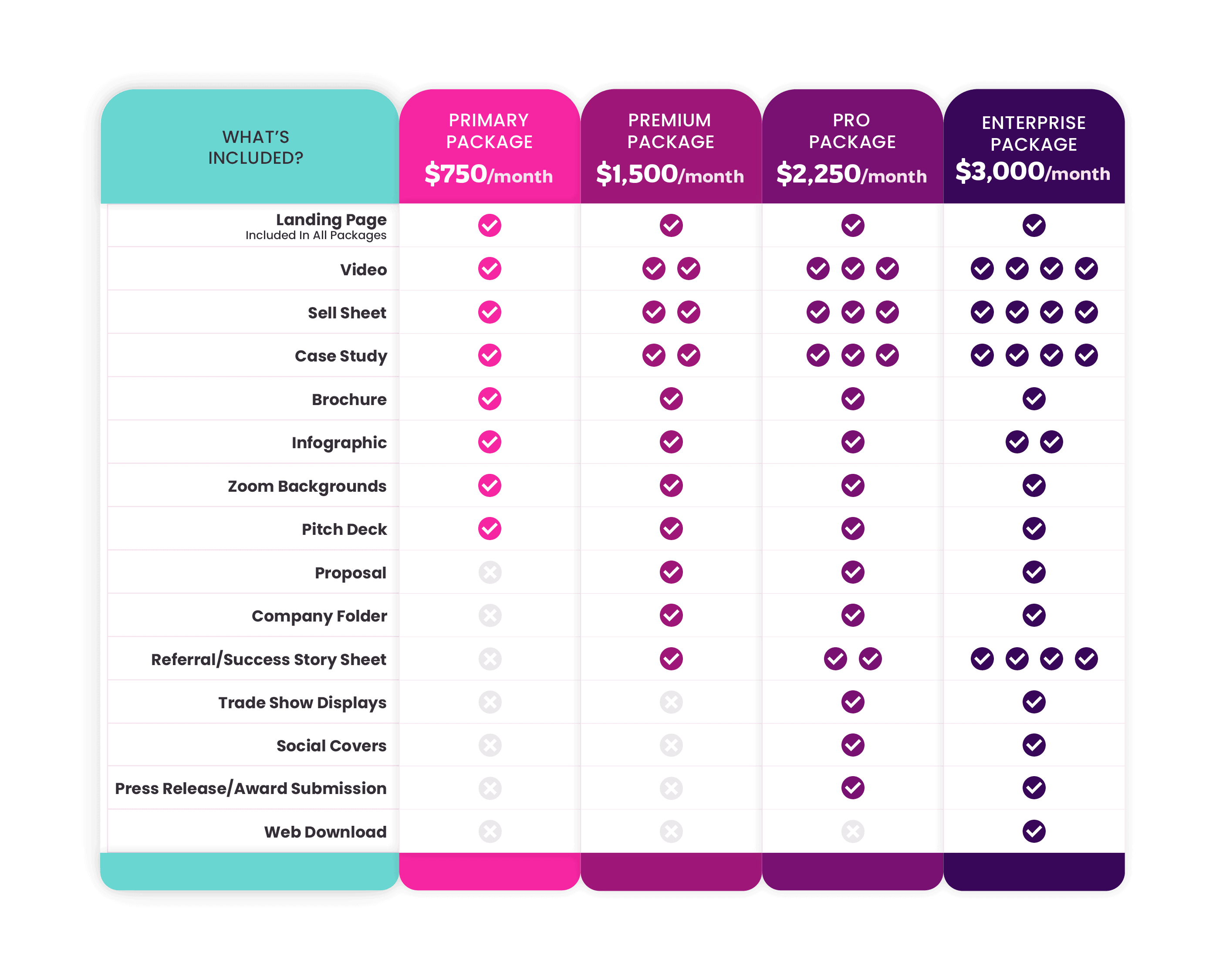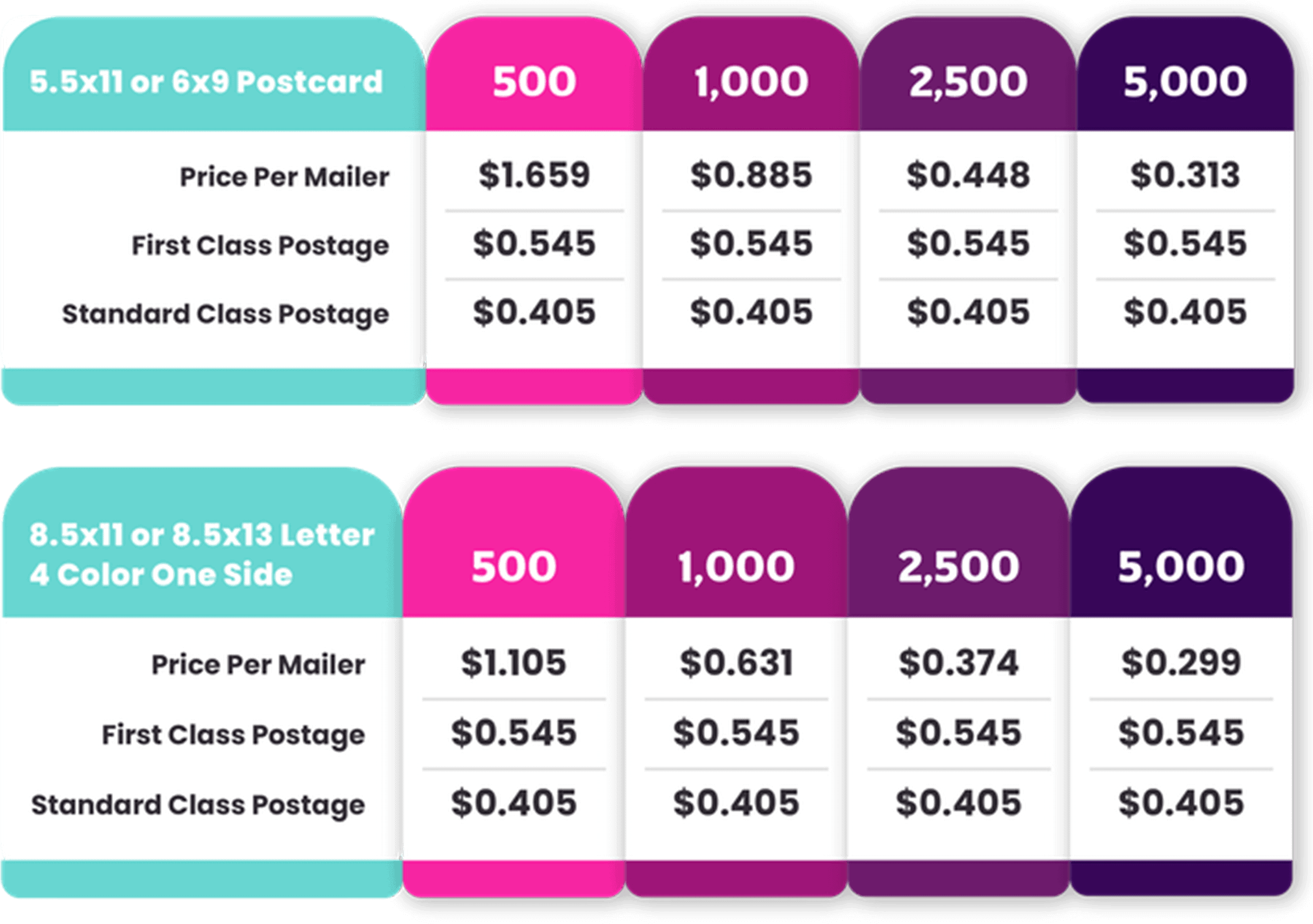Best Marketing Collateral for Potential Customers in the Decision Journey of the Sales Cycle
This is the moment your internal team and sales development representatives (SDRs) have been working so hard for—the sales appointment. A B2B sales appointment could be the make or break point of a potential buyer getting to the end of the sales funnel with your company. While they may be making it to the end of the purchasing funnel with one company, there’s no guarantee that it’ll be yours.
So, how can you support a potential customer’s decision-making process with marketing collateral? Well, let’s start with what motivates a customer’s purchasing decision.
When a potential buyer is going through the consumer decision-making process, they’re often motivated to make a purchase if a company meets and understands their:
- Feelings
- Emotions
- Beliefs
- Thoughts
- Values
During a potential customer’s decision journey through the sales funnel, they’re evaluating their alternatives and determining which solution aligns best with the wants and needs of their company. Creating marketing collateral that supports a potential customer’s emotional and logical needs gets them one step closer to making a buying decision and closing business with your company.
If you want to explore the best types of marketing collateral for the lead nurturing (or consideration) stage of the customer’s journey, check out our blog here.
Keep reading to explore which sales enablement materials are best for consumers in the decision journey of the sales cycle.
Sales Presentations (Pitch Decks)
Okay, your sales reps have spent months prospecting, qualifying, and nurturing leads in the sales pipeline to build rapport and persuade them that they can’t live without your company’s product or service. Now, it’s your internal sales team’s time to dazzle qualified leads with a killer sales presentation that they can’t turn down.
While anyone can put together a sales presentation for their scheduled sales appointments, it takes a significant amount of time, energy, and creative expertise to develop a pitch deck that converts leads into customers. With a high-quality pitch deck, your internal sales reps have the opportunity to wow key decision-makers (KDMs) and make their consumer buying process an easy “yes.”
Before your marketing specialists start designing a pitch deck for your sales appointments, it’s essential that they understand the full scope of the prospective business’s pain points and how your business can relieve the problems they encounter. Sales presentations should be focused on the wants and needs of the lead rather than an hour-long presentation on how great your company is.
As you design your pitch deck, it’s essential to tailor it to the wants and needs of the prospective business. Centering the sales presentation around the lead starts your company off on the right foot and enhances a customer’s experience with your company from the get-go. Additionally, it allows your internal sales reps to go in-depth on products and services they’re interested in rather than give a general overview of each product and service offering.
While there’s technically no right or wrong way to craft a sales presentation, there are some best practices you should follow to enhance the flow of the conversation and make it valuable and organic. As you design your pitch deck, consider following this structure:
Slide 1: Brief Presentation Overview
The first slide of the sales presentation should give a brief overview of everything you’ll go over during the meeting. This would be a good time to ask the attendee if there’s anything they’d like to add to the agenda—that way, you can make sure to cover it before the meeting is over.
Slide 2: Introduce Your Company
On the next slide, you should introduce your company to the meeting attendee. Here, you can give the individual insight into the history of the company, what the company values, and how it’s played an impact on businesses in their target market. This slide would also be an excellent time to show the attendee a promotional video about your company. A video for this slide could highlight a client case study, your company culture, and more.
Slide 3: Lead Problem Recognition
Now that you’ve introduced who you are and what your company represents, it’s time to jump into the meat of it—acknowledging the attendee’s pain points and strategizing a solution. During this part of the presentation, it’s important to empathize with the prospect so you can relate with them on a personal level. Additionally, it’s essential to ask the lead open-ended questions during this slide so you have a full scope of their problems and understand how you can best resolve them.
Slide 4: Show How Your Company Is Different From Competitors
Why should a lead choose to close business with your company over another? Well, this slide should tell them exactly why. Since you’ve identified their problem and presented a solution, this slide should focus on why a KDM should collaborate with your company over a competitor. In this slide, you can compare your product and service offerings or customer satisfaction ratings to competing companies. Additionally, you can present client testimonials in this slide that resonate with the lead and their current pain points. This encourages the sales meeting attendee to envision themselves in your clients’ shoes.
Slide 5: Discuss Specific Product and Service Offerings
On this slide, you should go into detail about your product and service offerings. As mentioned previously, it’s important only to emphasize the products and services they’re interested in. While briefly mentioning other products and services may be beneficial, don’t go too far into detail about them because you may risk losing their attention.
Slide 6: Introduce the Team
For small to medium-sized business partnerships to be successful, it’s essential to know (or at least introduce) everyone the prospective business may be working with. This slide is essential because it puts a name and a face with a job title, so the lead knows who to contact if they have specific questions about the product, service, or partnership. For an additional customer experience boost, it may be beneficial to include their professional social media profiles, like LinkedIn, so the KDM can research the individual and better grasp who they are.
Slide 7: Review the Implementation Process and Overall Costs
Ah, yes. The slide that each meeting attendee anxiously waits for—pricing. Before jumping into the costs, go over the client implementation process with the lead so they have a thorough understanding of what to expect when they onboard with your company. After going over the implementation process, discuss the pricing of the products and services you’re pitching them.
Slide 8: Cover the Next Steps
Now that you have all the grounds covered, it’s time to wrap up the sales presentation and ask if they have any questions about anything you just went over. Don’t worry if they have a lot of questions; they just had a lot of information thrown their way—it’s only natural. Once the sales presentation is over, it’s crucial to discuss the next steps. More often than not, if the prospect is interested, the next steps include sending them a business proposal. At the end of the meeting, give them an accurate timeline of when to expect a proposal for your products and services.
While this structure isn’t a one-size-fits-all solution for every pitch deck, following these slide-by-slide guides can help you organize your thoughts, help you stay on track with the conversation, and minimize the risk of forgetting to discuss a crucial talking point.
Business Proposals
Since you knocked the socks off your lead with your incredible sales presentation (which we know you did if you followed our pitch deck guidelines above), it’s time to send them a typed-up business proposal. A business proposal for a potential business opportunity should be clear, concise, and easy to understand. Additionally, it should include all the information a customer needs to know about the business partnership.
When writing a business proposal, you should include a(n):
- Document title
- Table of contents
- Executive summary
- Potential buyer pain point
- Solution to the buyer’s pain point
- List of industry qualifications
- Cost of offered products or services
- Terms and conditions
- Space for required signatures
A business proposal should be sent to an individual in PDF format. A PDF is necessary for business proposals because it’s a universally legible document that can be used to simplify signing procedures. For enhanced convenience, many companies require digital contract signatures over handwritten signatures. A company can integrate eSignature tools like DocuSign or Adobe Sign for a streamlined contract signature process.
Key Takeaways
Sales presentations and business proposals are essential sales enablement assets for guiding leads to the end of the sales funnel and into the customer loyalty loop. With high-quality marketing collateral for a customer in the decision journey of the sales cycle, you have the opportunity to present your business in a positive light and close deals with qualified leads in the sales pipeline.
For a complete look into the best types of marketing collateral for each stage of the buyer’s journey, download our exclusive guide here.
If you need help creating high-quality marketing collateral that converts leads into loyal customers, contact the outsourced marketing and design experts at Creative Sweets!









